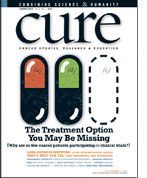Other Leukemias
Leukemia is more than just one disease.
The term “leukemia” refers to cancers in which the bone marrow makes abnormal white blood cells (leukocytes). These abnormal cells can crowd out healthy blood cells and interfere with their function.
About one in 78 Americans will be diagnosed with some form of leukemia during their lifetimes, and nearly a quarter million Americans have a history of the disease.
Leukemias are labeled according to how quickly they progress. Chronic leukemias worsen slowly, and are often detected by routine blood tests before symptoms arise. By contrast, acute leukemias progress quickly.
Different forms of the disease are also named according to which type of white blood cell is affected, and each is evaluated and treated differently. Disease that affects lymphocytic cells is labeled “lymphocytic,” “lymphoid,” or “lymphoblastic,” whereas disease that affects myeloid cells is called “myeloid,” “myelogenous,” or “myeloblastic.” Hence, chronic lymphocytic leukemia (CLL) is a slow-developing cancer affecting lymphocytic white cells.
CLL is one of four common types of leukemia. The others are:
> acute lymphocyctic leukemia (ALL), a fast-growing cancer that accounts for more than 5,000 new cases of leukemia in the U.S. each year. ALL is the most common type of leukemia in young children, accounting for about three out of every four cases, although it also affects adults.
> chronic myeloid leukemia (CML), a slow-developing leukemia that is diagnosed in about 5,000 Americans each year. CML mainly affects adults.
> acute myeloid leukemia (AML), a fast-growing disease that accounts for more than 13,000 new cases each year and affects both adults and children. After ALL, AML accounts for most other cases of childhood leukemia.
A slew of rarer leukemias account for less than 6,000 new cases each year. One example is hairy cell leukemia, a chronic leukemia named for the microscopic, hairlike extensions on the outside of the cancer cell. Another is large granular lymphocyte leukemia (LGLL), a form of chronic leukemia. Yet another is chronic myelomonocytic leukemia (CMML), which affects primarily older adults.
CMML and a similar childhood leukemia known as juvenile myelomonocytic leukemia (JMML), which arises most often in infants and children under age six, have features of two other types of blood cancer, myelodysplastic syndromes and myeloproliferative disorders. Also rare in children are acute hybrid leukemias, which mix features of ALL and AML.

Patrick Swayze’s Widow Reflects His Cancer, Demi Moore Speaks About Breast Cancer and More
April 12th 2024From Patrick Swayze’s widow recalling his pancreatic cancer diagnosis to Demi Moore speaking about her aunt’s courage during cancer, here’s what’s going on in the oncology space this week.
Read More